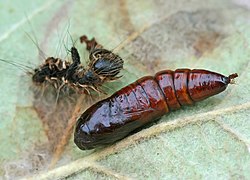| Grey dagger | |
|---|---|
 | |
| Scientific classification | |
| Kingdom: | Animalia |
| Phylum: | Arthropoda |
| Class: | Insecta |
| Order: | Lepidoptera |
| Superfamily: | Noctuoidea |
| Family: | Noctuidae |
| Genus: | Acronicta |
| Species: | A. psi |
| Binomial name | |
| Acronicta psi | |
| Synonyms | |
| |
The grey dagger (Acronicta psi) is a moth of the family Noctuidae.





